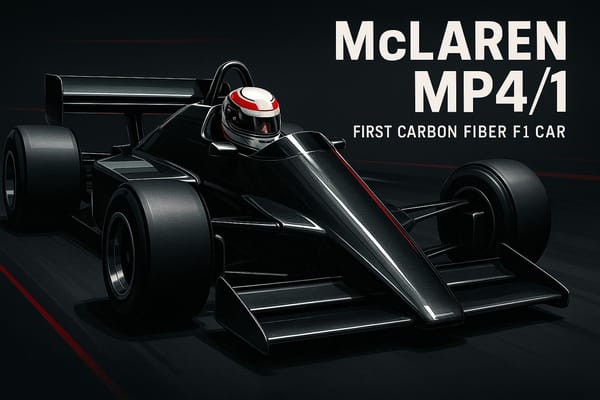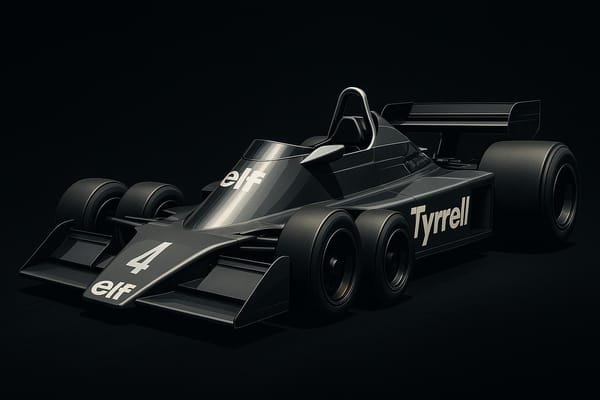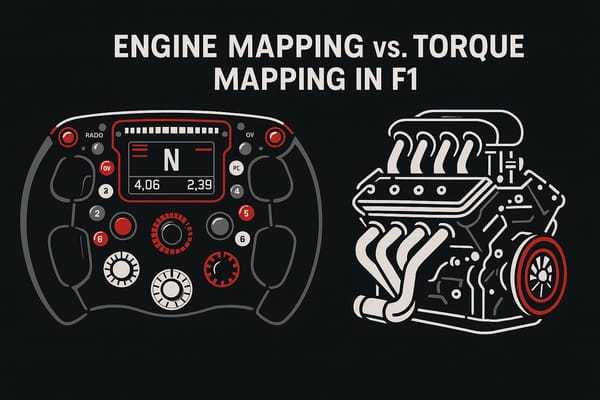Circuit Zandvoort: The Dutch Comeback Story and the Return of Classic Racing
Explore the rich history and modern transformation of Circuit Zandvoort, a unique blend of classic racing and contemporary F1 standards.
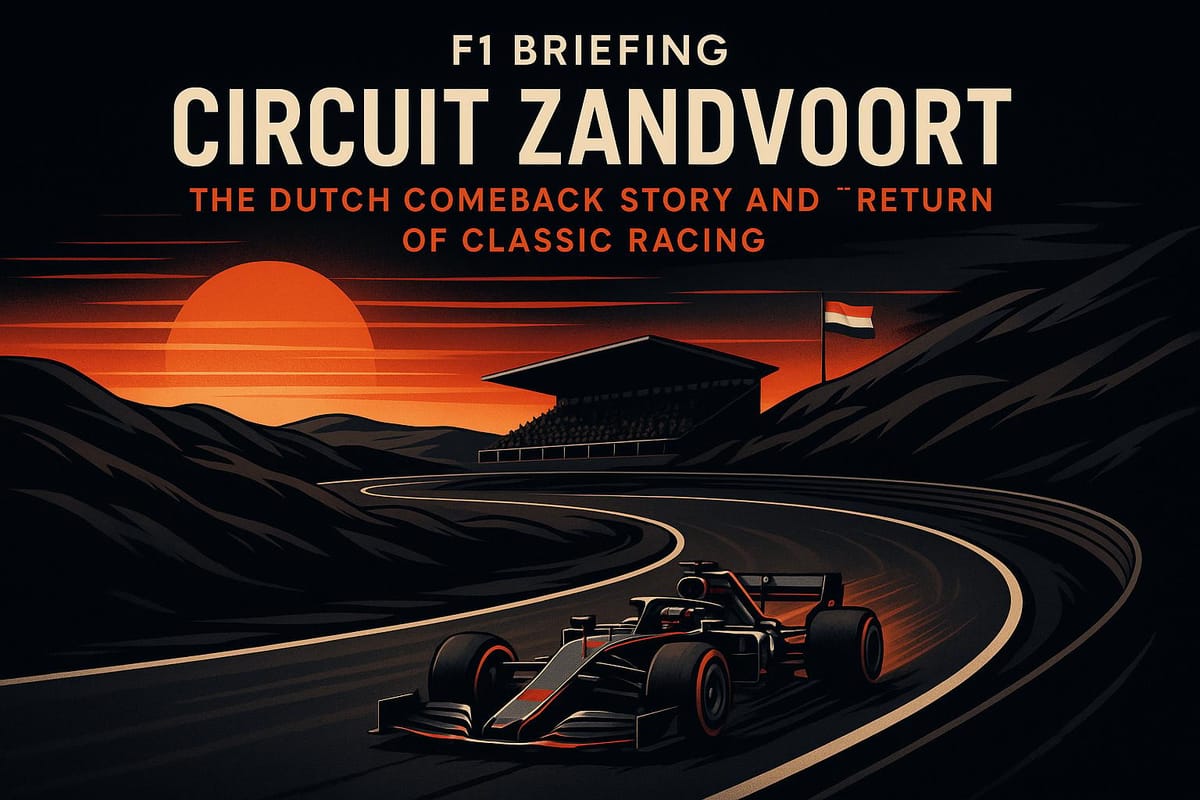
Circuit Zandvoort’s return to Formula 1 in 2021 after a 36-year break is a story of blending history and innovation. The track, known for its challenging layout and rich racing heritage, underwent major upgrades to meet modern safety and performance standards, including the addition of banked corners and eco-friendly event strategies.
Here’s what you need to know:
- Historic Significance: Hosted F1 races from 1952 to 1985, with legends like Jim Clark and Niki Lauda making history here.
- Modern Revival: Revamped with banked corners and safety improvements, the circuit returned to F1 in 2021, coinciding with Max Verstappen’s rise.
- Fan Engagement: The Dutch Grand Prix became a festival, drawing over 100,000 fans and setting benchmarks in sustainability.
- Future Outlook: Despite its success, the event will conclude after the 2026 season, leaving a lasting legacy in modern F1.
Zandvoort stands out as a model for balancing tradition with modern racing demands, offering both fans and drivers a unique experience.
Evolution Of Zandvoort F1 1948 - 2023
Circuit Zandvoort's Formula One History
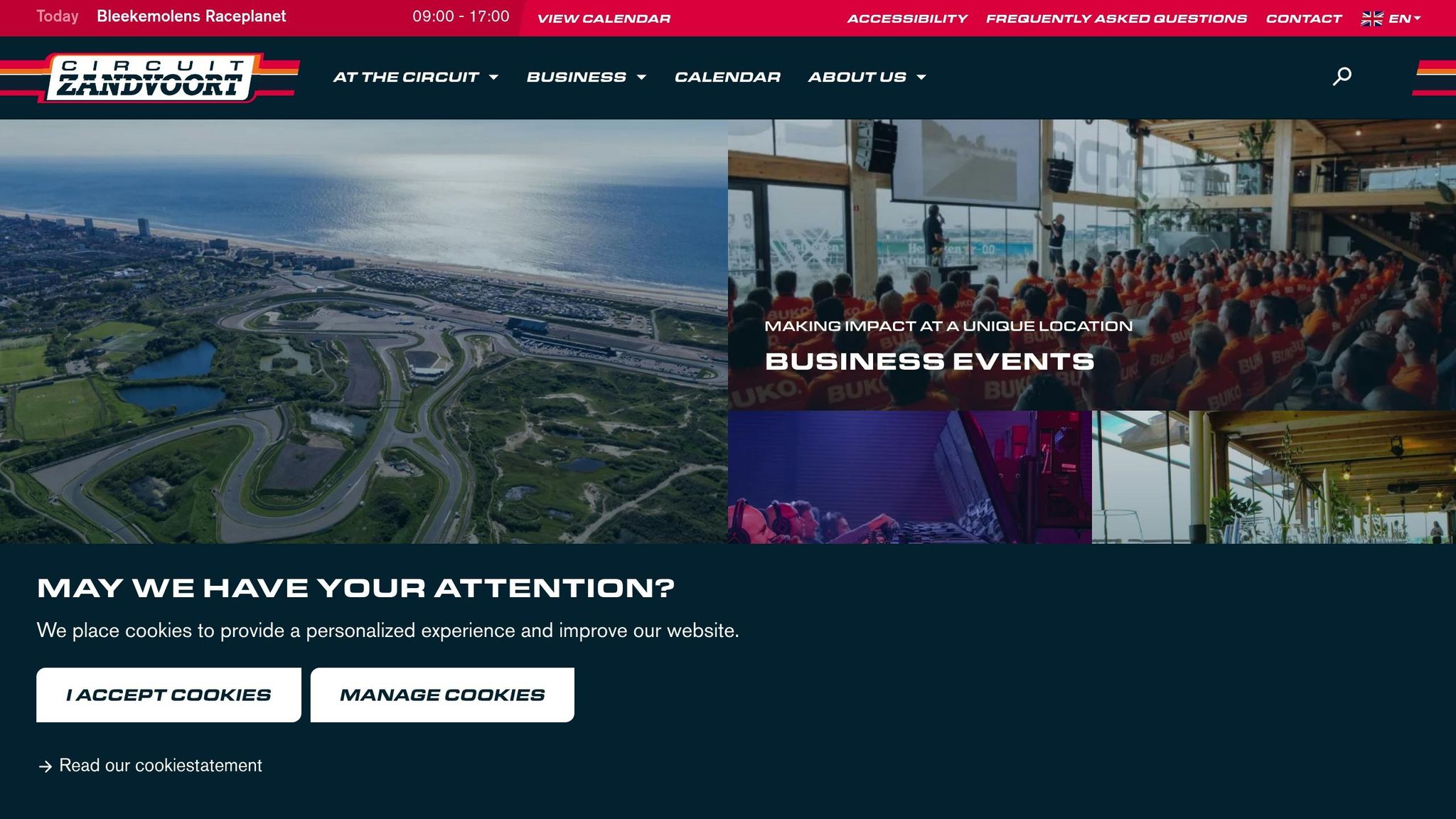
Circuit Zandvoort has carved out a special place in Formula One history, offering a mix of technical challenges and unpredictable conditions that have led to some of the sport's most unforgettable moments. Its races have not only thrilled fans but also played a role in shaping the technological evolution of Formula One.
Famous Races and Historic Moments
Over the years, Zandvoort has been the backdrop for numerous iconic races. One of the most celebrated is James Hunt's first Grand Prix victory in 1975. Driving for the underdog Hesketh Racing team, Hunt managed to hold off Niki Lauda's Ferrari in tricky, changeable weather - a moment that proved smaller teams could compete with the sport's giants.
"Formula 1 is a flat bottle of champagne in need of a rather good shake." – Lord Hesketh
In 1985, Niki Lauda claimed his final Formula One win at Zandvoort, battling teammate Alain Prost in a gripping race that showcased his extraordinary skill and determination.
The circuit has also seen its share of drama. During the 1979 Dutch Grand Prix, Gilles Villeneuve experienced a tire puncture while leading the race. In a scene that has become legendary, he drove back to the pits on three wheels after the tire exploded, demonstrating his trademark resilience.
Jim Clark, one of Formula One's all-time greats, left an indelible mark at Zandvoort. The Scottish driver led an incredible 370 laps at the track - more than twice as many as any other competitor.
Zandvoort's Role in Early Formula One
Zandvoort was more than just a stage for thrilling races; it was a proving ground for innovations that shaped the sport. Spanning 4.3 km (about 2.6 miles), the circuit's demanding layout made it an ideal venue for testing new engineering ideas.
One of the most pivotal moments in Formula One's technical history occurred at Zandvoort in 1967. Colin Chapman's Lotus 49 introduced the Ford Cosworth DFV V8 engine, a game-changing design that integrated the engine as part of the car's structure. This innovation dominated Formula One for over a decade and set new standards for car design.
Adding to its mystique, Zandvoort was built on roads originally constructed during World War II. This wartime origin gave the circuit a unique character, symbolizing hope and renewal in the post-war era.
Even beyond its Formula One tenure, the track remained a place where drivers honed their craft. Reflecting on his time at Zandvoort, James Hunt credited the circuit with shaping his skills, saying:
"That was the completion of my training as an F1 driver. It enabled me to win the 1976 championship, at my first and only chance in a competitive car." – James Hunt
Zandvoort's combination of high-stakes racing and technical experimentation solidified its legacy as a venue where both drivers and engineers pushed the boundaries of what was possible in Formula One.
Track Updates and Return to F1
Revamping Zandvoort required a delicate balance: preserving its classic charm while meeting the rigorous demands of modern Formula 1.
Circuit Modifications and Safety Improvements
Bringing Zandvoort up to date wasn't just about tweaks - it was about reimagining its layout without losing its soul. As track manager Niek Oude Luttikhuis put it:
"It all started with a problem."
The main challenge? Designing DRS zones on a track where the longest straight is just 2,297 feet (700 meters) - a far cry from the typical 1-kilometer straights seen at many modern circuits. Extending the straight wasn’t an option, so the team had to think outside the box. Inspiration struck when Oude Luttikhuis suggested:
"Why don't we do it like in Indianapolis and put in a steep curve."
This idea led to the creation of Zandvoort's now-iconic banked corners. Turns 3 (Hugenholtzbocht) and 14 (Arie Luyendykbocht) were designed with a dramatic 19-degree banking - nearly double that of the Indianapolis Motor Speedway. For context, Turn 3’s outer edge towers 13 feet (4 meters) above its inner edge. The result? Jaw-dropping forces: Turn 14 generates over 4g, while Turn 7 hits lateral forces of about 5g at speeds exceeding 161 mph (260 kph). Heavy braking zones at Turns 1 and 11 add to the spectacle, with deceleration forces around 5g.
To meet FIA Grade 1 standards, several changes were made:
- Start/finish line relocation: Improved visibility from the grandstands.
- Gerlachtbocht exit widening: Enhanced safety.
- Hugenholtzbocht modifications: Expanded inside area for higher speeds and more racing room.
- Hans Ernst Bocht chicane adjustments: Shortened and widened for better flow.
- Track resurfacing: A complete overhaul with new asphalt.
Safety upgrades were equally critical. Engineers, in collaboration with Geobrugg, installed 11,155 feet (3,400 meters) of permanent debris fences, 2,953 feet (900 meters) of mobile debris fences, and nearly 1,969 feet (600 meters) of concrete barriers. The banked Arie Luyendykbocht also received a SAFER barrier for added protection.
Jarno Zaffelli, whose company Dromo led the redesign, highlighted the importance of these safety measures:
"The combination of skill and capability that Geobrugg provide, the timing and the reliability they have, and a product that can be adapted very quickly if the F1 requires it, gives us the confidence to use their solutions."
The construction timeline was tight - just four months - with around 200 workers braving harsh weather and sandy soil conditions. Engineers tackled these challenges by analyzing load capacity and implementing drainage systems to handle tides and rainfall.
These upgrades honored Zandvoort’s legacy while transforming it into a cutting-edge F1 venue, setting the stage for a thrilling return to the Dutch Grand Prix.
Dutch Grand Prix Returns in 2021

The reimagined Zandvoort made its debut during the 2021 Dutch Grand Prix, offering what was described as a "hypertrack" experience. The circuit’s redesign not only met expectations but exceeded them. As Jarno Zaffelli explained:
"This is a unique passage for Formula 1 tracks. That's why we call Zandvoort a 'hypertrack,' because there's nothing like it yet."
The focus was on enhancing the track’s character, not erasing it. Track manager Niek Oude Luttikhuis emphasized:
"Zandvoort is an old-school circuit, and we wanted to preserve that look. That meant any changes should not make the track more boring, but more exciting. And we didn't want to end up with a car park with colorful lines."
The redesign retained Zandvoort’s signature "roller coaster effect", with its undulating layout and challenging corners. The innovative banking not only solved space constraints but also introduced new overtaking opportunities in high-speed sections.
Max Verstappen, the first Dutch driver to win his home Grand Prix at the revamped circuit, praised the changes:
"The track was already nice to drive on, but the adjustments that have been done make it even more special. Especially Turn three, the banking there is great and you are able to drive different lines. That also goes for the final corner."
Building on the success of the 2021 event, further updates were planned. A pitlane extension, scheduled after the 2023 Grand Prix, aims to provide additional space during pit stops. Reflecting on the project, Zaffelli remarked:
"My engineers at Zandvoort have created a masterpiece."
The return of Circuit Zandvoort proved that Formula 1 can embrace tracks steeped in history while adapting them for modern racing. It’s a testament to how tradition and innovation can coexist, creating a racing experience that’s both nostalgic and thrilling.
How Zandvoort Affects Racing and Driver Performance
Circuit Zandvoort is one of Formula 1's most distinctive tracks, offering a blend of nostalgia and technical challenges that push drivers and teams to their limits. Its layout, unique features, and unpredictable conditions demand precision, adaptability, and strategic brilliance.
Track Layout and Design Features
Zandvoort's layout is a throwback to classic circuits, with its narrow track and flowing design testing every facet of a driver's skill. Former Renault F1 driver Jolyon Palmer captures the essence of the challenge:
"It is a nice, flowing track. You've got to have commitment, particularly in the middle sector, which is undulating, and you've got to just have it hooked up in the high speed sections. You don't want to be having random snaps of oversteer, because it's a punishing circuit as well..."
Banked corners are a standout feature, creating forces rarely encountered elsewhere. Turns 3 and 14, in particular, demand a unique approach. Pirelli emphasizes the impact of these corners:
"What makes this track really unique on the championship trail are the banked Turns 3 and 14... Banked corners are not that common in Formula 1 and therefore present an unusual challenge for both car and driver. It also has an effect on the tyres, because the higher speeds of the banked turns compared to the normal ones subjects them to even greater forces."
The final corner's 18-degree banking - nearly twice that of the Indianapolis Motor Speedway - adds another layer of complexity, affecting tire wear and racing lines. With no tarmac run-off areas, mistakes are costly. As Alpine driver Pierre Gasly points out:
"It's a bit old-school with the banking and it's a place where you cannot make mistakes - not quite like Monaco but in the same style. There are no tarmac run off areas and if you get it wrong, you are straight in the gravel or a wall, while the corners are unusual."
Adding to the challenge, windblown sand often reduces grip levels, creating a constantly shifting surface that requires drivers to adapt session by session. The rollercoaster-like elevation changes and high throttle usage - 68% of lap time spent at full throttle - further test the cars and drivers.
Race Strategy at Zandvoort
Zandvoort's tight, twisty layout limits overtaking opportunities, putting a premium on track position and strategy. Former Aston Martin F1 strategist Bernie Collins explains:
"Zandvoort is a tight and twisty track with some very banked corners, creating somewhat of a rollercoaster effect... The tight layout makes overtaking challenging without a significant tire advantage. However, high stress on the tyres and subsequent degradation makes this possible with offset stop laps or compounds."
Qualifying is critical here, as starting position often dictates race results. The 2023 Dutch Grand Prix saw only 47 overtakes, underscoring the importance of securing a strong grid position. Teams focus heavily on qualifying setups, knowing that even a slight improvement in track position can outweigh marginal gains in race pace.
Tire management is another key factor. The high stress on tires requires careful pit strategies, balancing the risks of degradation against the need to maintain track position. Thermal degradation, influenced by weather and track temperature, adds another variable to the equation. With pit stops costing 21.52 seconds on average, teams must plan their timing meticulously.
One-stop strategies are often preferred due to the difficulty of overtaking, but excessive tire wear can force teams into multiple stops. Safety cars and virtual safety cars, which each have a 67% probability of appearing during the race, further complicate strategic decisions. Teams must remain flexible, ready to adjust to sudden changes in race dynamics.
The overcut strategy - staying out longer to gain track position - can be particularly effective at Zandvoort. Hard tires often take several laps to reach optimal performance, giving teams an opportunity to capitalize while competitors struggle with tire warm-up after pit stops.
Ultimately, Zandvoort demands a careful balance of aggression and caution. The narrow track and punishing layout reward precision, while risky moves often end in gravel traps. It's a strategic chess match where every decision, from tire choice to pit timing, can make or break a race.
Conclusion: Zandvoort's Position in Modern Formula One
Circuit Zandvoort has shown that classic tracks can thrive in the world of modern Formula One without losing their distinct charm. After a 36-year hiatus, its return in 2021 demonstrated how historical allure can coexist with today’s rigorous safety standards.
This comeback hasn’t just been sentimental - it’s been impactful. By 2023, the Dutch Grand Prix saw a 35% rise in viewership, with 12 million unique viewers tuning in from the Netherlands alone. Max Verstappen’s dominance during this period undoubtedly played a role, as he secured victories in all three Dutch Grands Prix from 2021 to 2023 and clinched world championships in each of those years.
Stefano Domenicali, President and CEO of Formula One, summed up Zandvoort’s influence perfectly:
"I am incredibly grateful for the work that the team at the Dutch Grand Prix have done in recent years. They raised the bar for European Grands Prix in terms of event spectacle and entertainment..."
What makes Zandvoort stand out is its seamless blend of old-school racing thrills and modern updates. Nestled among the sand dunes, the track’s 18-degree banked corners and natural flow through the coastal terrain offer drivers a unique challenge. The atmosphere, fueled by enthusiastic Dutch fans, is described by racers as "really quick", "pretty insane", and "old-school". Unlike many newer circuits built on flat, repurposed airfields, Zandvoort feels alive, with its layout perfectly complementing the surrounding landscape [35,38].
Beyond its racing appeal, Zandvoort has also become a leader in sustainability, introducing innovations that have been adopted across Formula One. This forward-thinking approach proves that heritage tracks can still push boundaries while honoring their deep racing roots. With its unique characteristics and innovative strategies, Zandvoort has cemented its place in the modern F1 era.
However, its story comes with an unexpected twist. Robert van Overdijk, director of the Dutch Grand Prix, recently announced that the event will conclude after the 2026 season:
"We are a privately owned and operated business, and we must balance the opportunities presented by continuing to host the event, against other risks and responsibilities. We have decided to go out on a high with two more incredible Dutch Grands Prix in 2025 and 2026. We wanted to take this step while our event is adored and supported by passionate fans, residents, and the Formula One community."
This decision underscores the tension between commercial realities and the desire to preserve sporting traditions. Despite its relatively short return, Zandvoort has left an unforgettable legacy, proving that authentic racing experiences still resonate deeply in a sport increasingly shaped by commercial interests. It stands as a perfect representation of modern Formula One - a mix of cutting-edge innovation and timeless racing challenges.
FAQs
What challenges did Circuit Zandvoort face during its modernization for Formula 1, and how were they resolved?
Updating Circuit Zandvoort for modern Formula 1 came with a unique set of challenges. The goal was to meet today’s safety and technical standards while keeping the historic charm that makes the track so iconic. Two key areas stood out: the steep banked corners and the narrow track layout.
To tackle these, engineers carefully reworked parts of the track. Runoff areas were expanded, and cutting-edge safety features were added to meet modern requirements. The banked corners, a standout feature of Zandvoort, underwent a detailed reconstruction to ensure they could handle the demands of modern racing. This process balanced durability and safety without compromising the track’s thrilling, rollercoaster-like character.
The result? Zandvoort now meets the needs of today’s Formula 1 while still celebrating its legendary racing heritage.
What impact has Circuit Zandvoort's return to Formula 1 had on the sport, especially in terms of sustainability and fan experience?
Circuit Zandvoort's return to Formula 1 has left a lasting impression by focusing on eco-friendly practices and creating a more engaging experience for fans. The Dutch Grand Prix has gained recognition as one of the most environmentally aware races, aligning with Formula 1's ambition to reach Net Zero Carbon emissions by 2030. Efforts include using renewable energy, implementing waste reduction programs, and promoting green travel options for attendees.
On top of its environmental initiatives, Zandvoort has redefined the fan experience with creative engagement strategies. From hands-on activities to digital tools that bring fans closer to the action both on and off the track, the circuit has raised the bar for delivering an exciting and interactive race-day experience. By blending a commitment to sustainability with a focus on fan enjoyment, Zandvoort has become a standout destination in today's Formula 1 landscape.
Why is the Dutch Grand Prix ending after the 2026 season despite its success?
The Dutch Grand Prix is set to wrap up after the 2026 season, as organizers have opted not to renew the race's contract beyond that point. Although the event has enjoyed immense popularity and success, they have confirmed a one-year extension covering 2025 and 2026 but will not continue hosting it afterward. The specific reasons for this decision remain unclear, though it could stem from strategic or contractual factors.
This decision brings an end to Zandvoort's celebrated presence on the Formula 1 calendar, despite its rich history in the sport and a passionate fan base.
Related posts
- Imola’s Resurrection: From Tragedy to Triumph at the Emilia Romagna Grand Prix Circuit
- Albert Park Uncovered: The History, Evolution, and Challenges of the Australian Grand Prix Circuit
- Suzuka’s Legacy: How Japan’s Iconic Figure-8 Circuit Became a Driver Favourite
- Spa-Francorchamps Deep Dive: The Drama, Danger, and DNA of Belgium’s Legendary Track

